A strange but fascinating bird, the Transylvania naked neck chicken is nothing if not a conversation starter. Hardy and calm, this chicken, which performs well in warmer climates, is a dual-purpose breed used worldwide for both meat and egg production.
History of Naked Neck Chickens
Also known as the Transylvania naked neck chicken, turken, or kaalnek, the naked neck chicken is a bird that is striking in appearance; featherless from the neck to the upper breast and around the vent, these chickens are reasonably rare in the United States but common in Europe and widespread in South America.
While accounts differ on their origin, it is thought by some poultry experts that these birds were brought back to Europe from Asia as spoils of war by Hungarian conquerors. Others assert that naked necks originated in Transylvania and underwent significant development in Germany, where the single gene that controls the naked neck trait was identified.
Controlled by an incompletely dominant allele located near the middle of chromosome 3, individual chickens can be either homozygous dominant or heterozygous to exhibit the characteristic lack of feathers that defines this breed. However, individuals that are heterozygous will display less reduction in feathering than homozygous individuals.
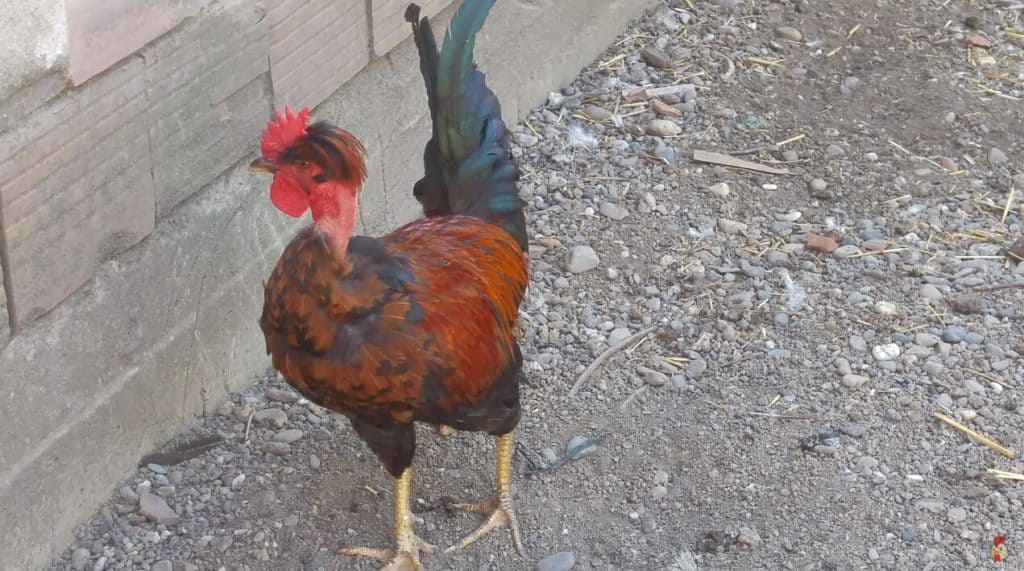
This occurrence necessitates that individual naked necks used to breed future generations should be homozygous dominant in order to produce chickens to the breed standard.
Individual chickens that are homozygous recessive will not exhibit the characteristic naked neck of this breed, nor will they be able to pass the naked neck trait down to future generations.
Although the naked neck gene is relatively easy to introduce into other chicken breeds, the chickens produced by this interbreeding are considered hybrids rather than true naked necks. First introduced in Great Britain in the 1920s, this breed was not recognized by the American Poultry Association until 1965, when stringent breed standards were set.
Sometimes called a Turken due to the mistaken assumption that this breed is a cross between chicken and a domestic turkey, the Transylvania naked neck is often confused with other featherless breeds, including the French naked neck and the naked neck gamefowl.
Breed Standard and Appearance

Easily identified by their prominent lack of feathers, Transylvania naked necks are naturally devoid of feathers on their necks and around the vent. Generally yellow in skin tone, the bare skin of the neck often turns bright red with repeated or prolonged exposure to sunlight, giving these birds a burned look similar to that of a turkey.
If not exposed to sunlight, the neck of this bird remains yellow or light pink in color. A large bird with a broad back, these chickens boast the standard shape of a breed developed for meat production.
Standard male naked necks weigh in at about 8.5 pounds, with females slightly smaller at 6.6 pounds. Bantams of this breed generally weigh in at around 2.1 pounds for males and 1.9 pounds for females.
Available in a variety of colors, Transylvania naked necks are recognized in black, white, blue, red, buff and cuckoo colors by poultry associations in the United Kingdom and in black, white, red, and buff by poultry associations in the United States.
Sporting featherless legs that are yellow in paler feathered varieties and slate blue in darker feathered varieties, these chickens have large, four toed feet and reddish-bay colored eyes. Additionally, naked necks have red earlobes, a single comb and large wattle, which are also red in coloration.
Personality and Temperament
Although the Transylvania naked neck garners much attention for its peculiar looks, the breed itself was not developed for exhibition or poultry shows. Instead, the naked neck is considered a dual-purpose chicken, valuable in terms of both meat and egg production.
Desirable as a meat bird due to their featherless necks and large, heavy bodies, these birds are especially prized because they possess approximately half the number of feathers of other, more traditional chicken breeds and are thus easier to pluck.
In fact, recent studies into the genes that control this breed’s featherless necks have also been found to improve breast size and reduce heat stress, making this chicken ideal for warmer climates.
In terms of temperament, the Transylvania naked neck is a generally calm, placid bird that does well in a variety of conditions and climates and is easy to tame when desired. Hardy and active, these chickens are reasonably good foragers and do well in free range situations, as their large, heavy bodies prevent them from roosting out of reach.
However, these chickens also tolerate confinement well and require additional housing and protection in extremely cold temperatures. A sturdy breed, naked necks are generally resistant to most diseases, making them an ideal choice for small farms or urban flocks.
Naked Neck Chicken Egg Laying
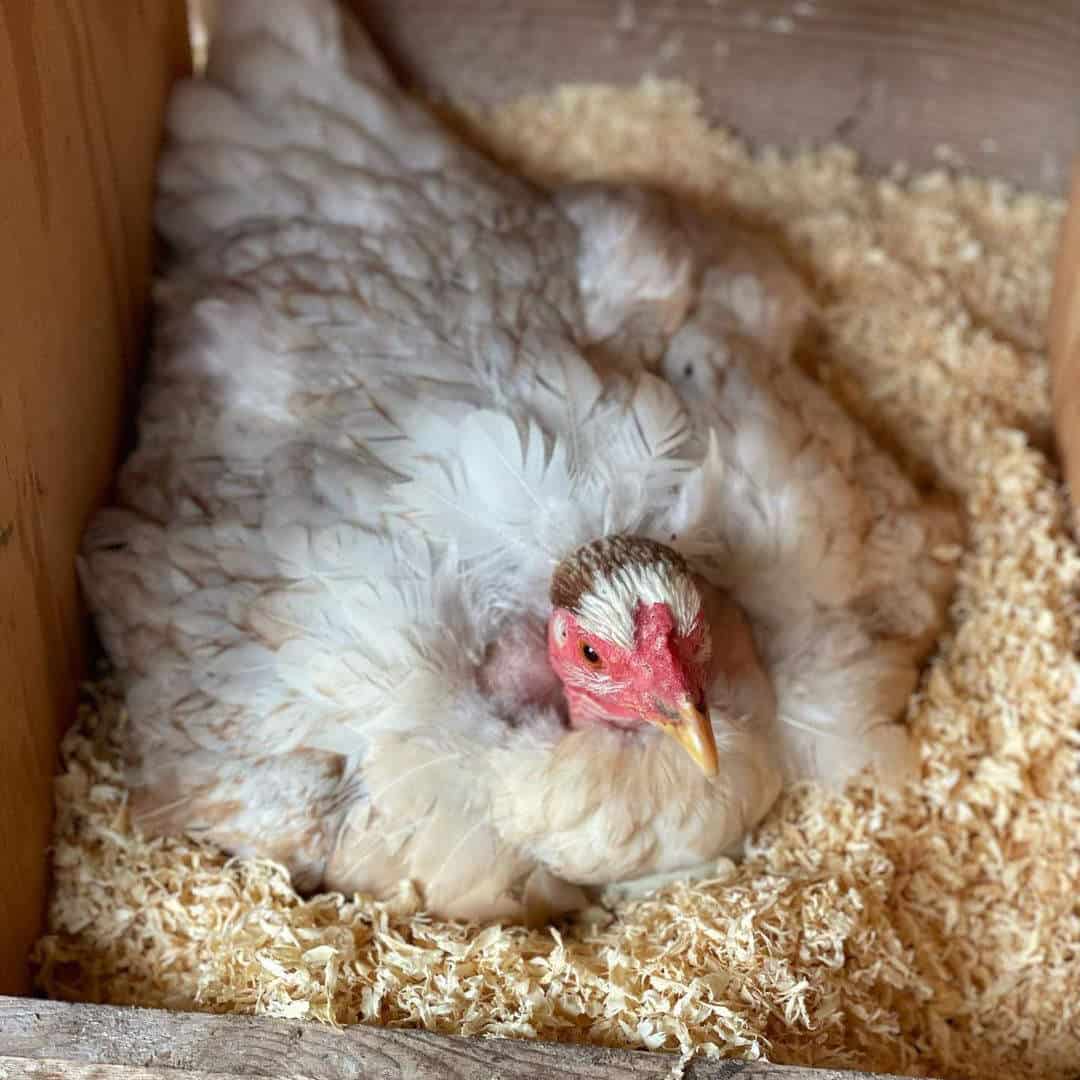
As valuable in terms of egg production as they are for meat production, the Transylvania naked neck is a respectable, steady egg layer. Producing reasonably sized brown or light brown eggs, these birds can supply the average family with enough eggs, making supplementing generally unnecessary.
Calm and easily tamed, the good nature of the naked neck, along with its inability to roost in high places, makes egg collection simple. However, because these birds do best in warm climates, egg production may slow or halt if the birds are exposed to consistently colder temperatures without proper shelter.
Health Issues and Care
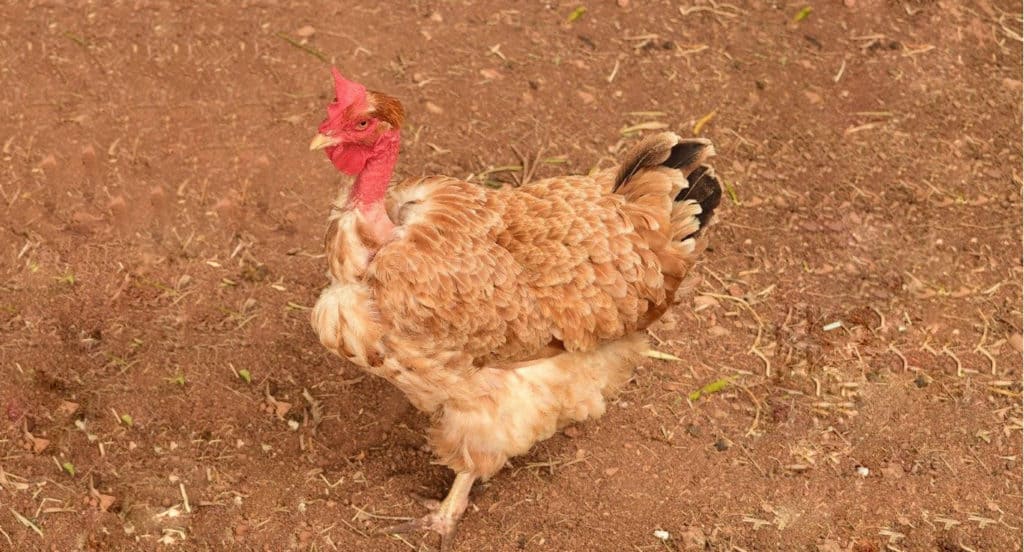
Because these birds are considered to be generally sturdy and hardy, they are kept in a variety of conditions, climates, and regions. Found both in North America and Europe, the Transylvania naked neck can withstand some chillier temperatures, but requires protective housing in regions where extreme cold is common.
Performing better under warmer conditions, these chickens are prolific in South America, where the hotter climates better suit their featherless bodies.
In fact, studies by poultry experts have found that the naked neck trait has been found to facilitate lower body temperatures and reduce heat stress when compared to fully-feathered birds, making the Transylvania naked neck an ideal breed for subtropical and tropical areas.
Adaptable and versatile, these birds can be kept equally well by large-scale producers, small farms, urban hobbyists, and exhibition professionals. Transylvania naked necks enjoy foraging and free range conditions, so allowing them ample opportunities to find food is preferred.
However, these chickens do tolerate confinement reasonably well, thriving in coops of varying sizes as long as they have ready access to food, water and shelter. Most importantly, naked necks are immune to most common diseases, making them an easy and low-maintenance option for those with limited resources or poultry experience.
4 Tips for Raising Naked Neck Chickens
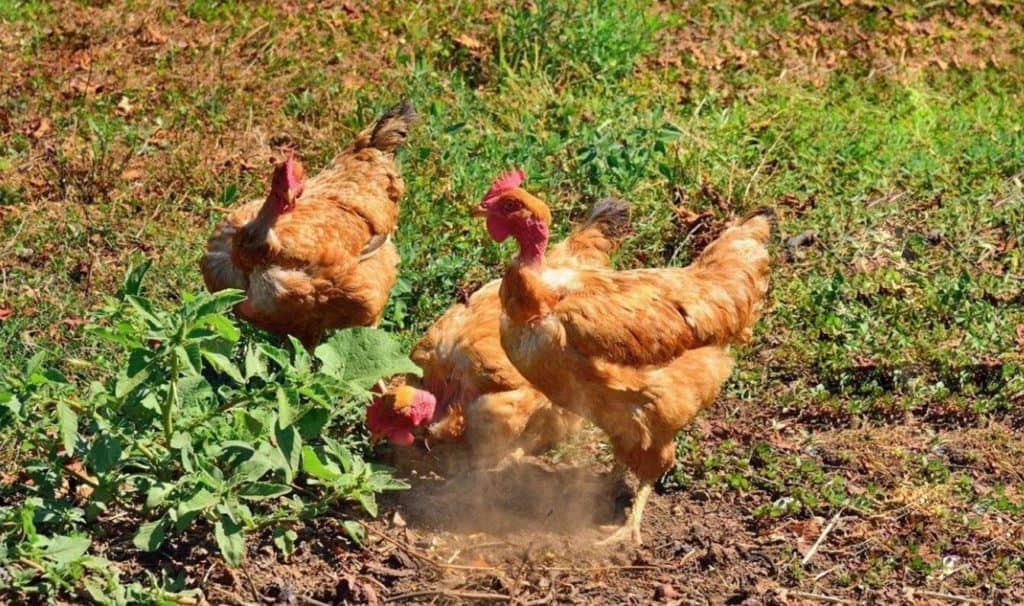
1. Be Ready for Questions
The Transylvania naked neck is undoubtedly unique in appearance, so any addition of this bird to your flock is sure to draw attention. Once spotted by neighbors and acquaintances, your naked neck will be the topic of conversation.
While some may want to understand how and why such a breed exists, others will be concerned that your chickens are losing feathers due to illness or fighting and will offer advice or assistance.
In either case, be ready with a friendly smile and a concise explanation of the naked neck and its distinctive genetics — perhaps your information will encourage others to get a naked neck of their own.
2. Don’t Sweat the Heat
These chickens are extremely well-adapted to warmer climates, so hot days or heat waves will generally leave them unaffected.
Because they boast half of the number of feathers of traditional chickens, the Transylvania naked neck has a significantly higher heat tolerance, a lower body temperature and a higher threshold for heat stress when compared to other birds.
This makes them ideal poultry for humid tropical or subtropical climates, as well as more arid desert regions. However, water is still key for any animal exposed to significant temperatures, so be sure that water is always available and readily accessible to your flock.
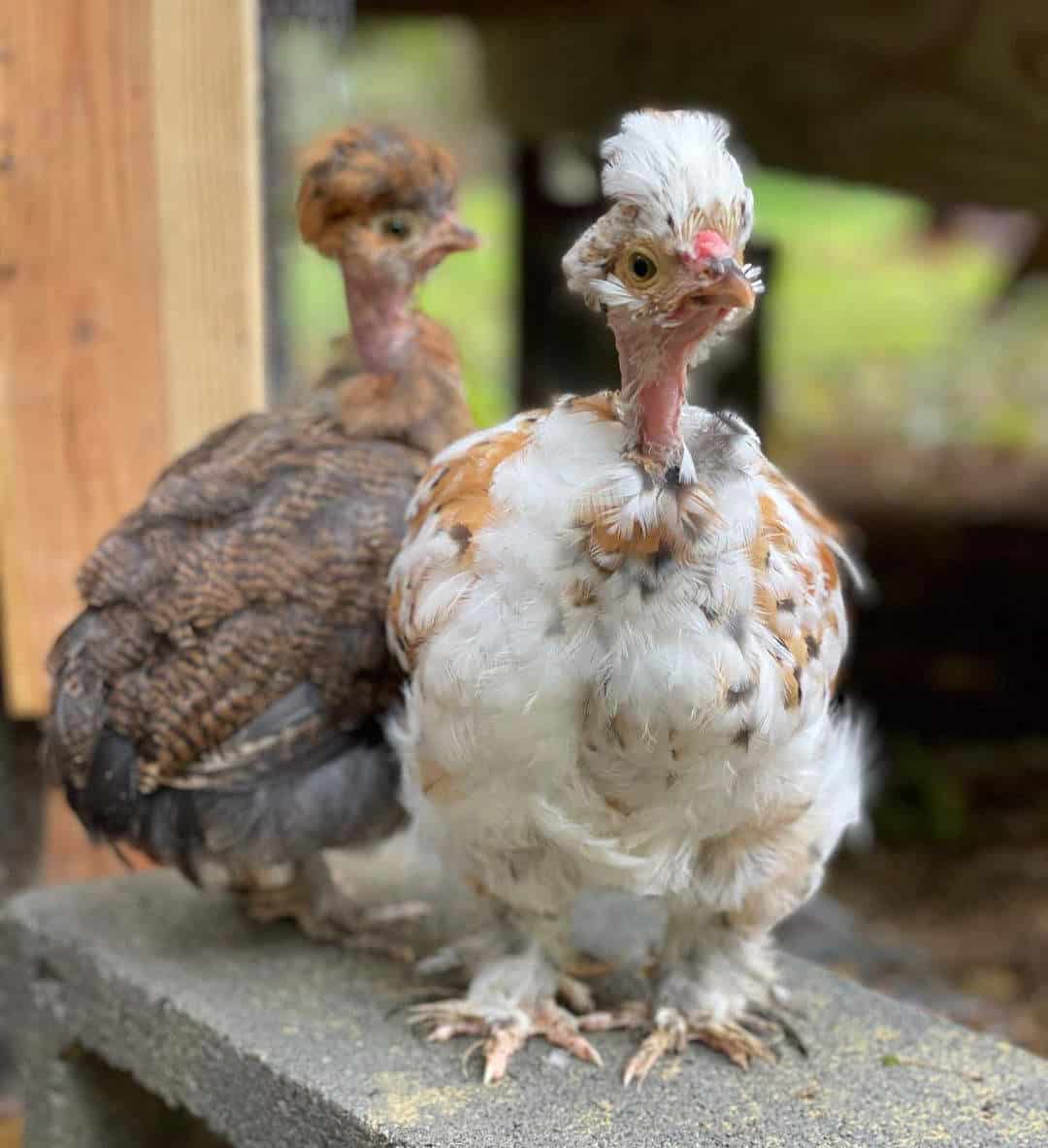
3. Protect Against the Cold
In contrast with their warm weather tolerance, Transylvania naked necks cannot endure extreme or prolonged cold weather. That same lack of feathers that makes them ideal for hotter regions makes them less suited for colder ones, as they cannot retain the body heat they need to survive harsh winter weather.
Although they are relatively sturdy and can handle some colder days, your naked neck needs protective housing, such as an insulated coop or shed, in order to survive in areas with consistently cold winter temperatures.
4. Enjoy the Spoils
The Transylvania naked neck is known for its appearance, but it should be noted that this chicken was bred for utility, and is thus a good producer of both meat and eggs. Not a show breed, naked neck hens should produce a respectable number of eggs, enough to supply the egg needs of a small household or supplement a larger one.
And if meat birds are your desire, the neck is a hefty, broad bird whose large breasts and ease of plucking offer both commercial and local farmers a significant, hardy source of meat.
Summary
Despite their often questioned appearance, Transylvania naked neck chickens are hardy, useful birds whose ability to withstand hotter temperatures makes them boon to farmers or hobbyists in warmer climates. Even-tempered and disease resistant, these chickens are a practical solution for any farmer looking for both a good laying bird and a good meat bird.

Joseph Hudson has been raising chickens for over 15 years. In 2018, he completed the Agriculture & Natural Resources program at Mt. San Antonio College. He currently raises over 1400 chickens on his 7.5-hectare farm. He keeps sharing his experience on raising healthy and happy chickens on Chicken Scratch The Foundry.
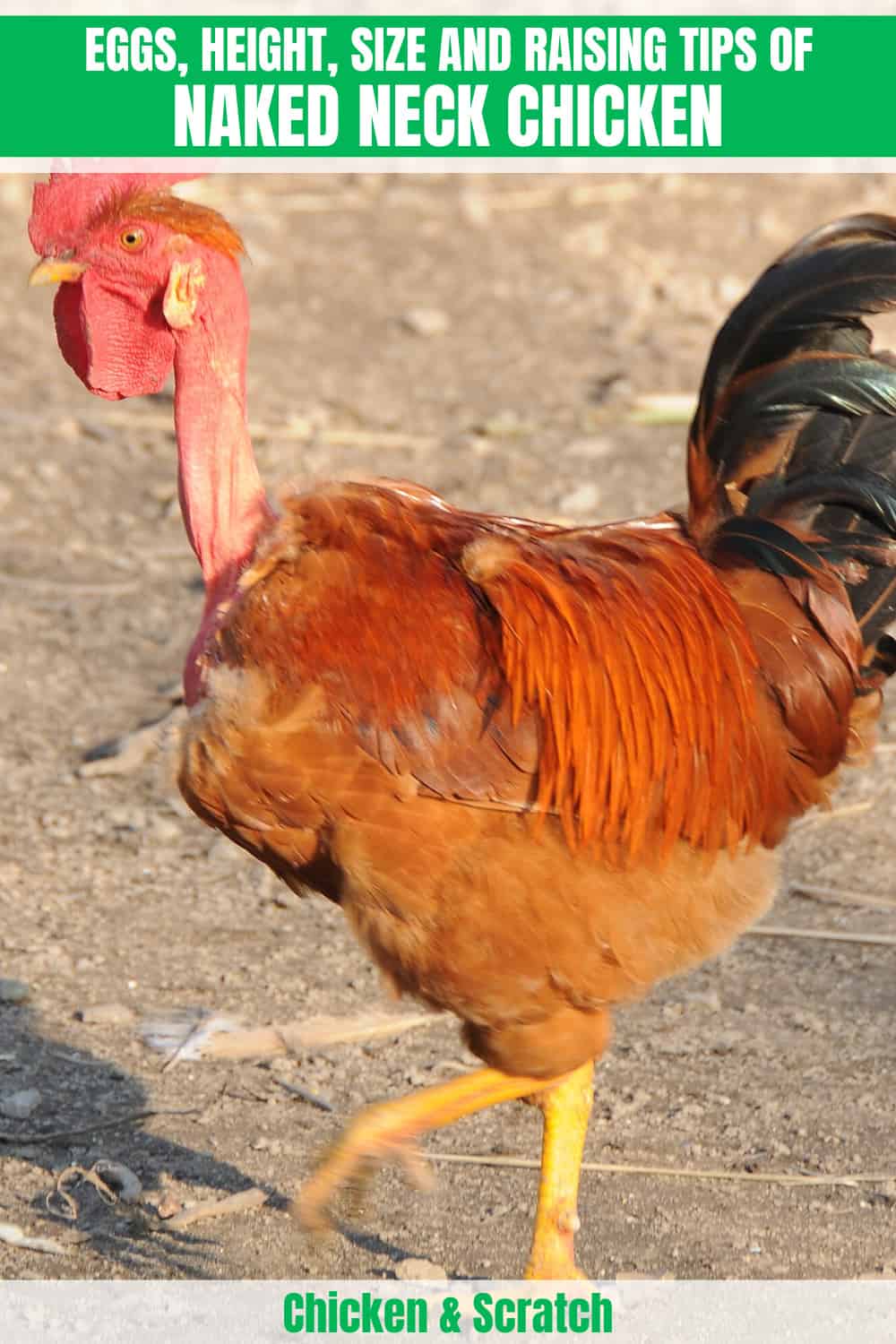








good can get in ethiopia
good can we get in ethiopia